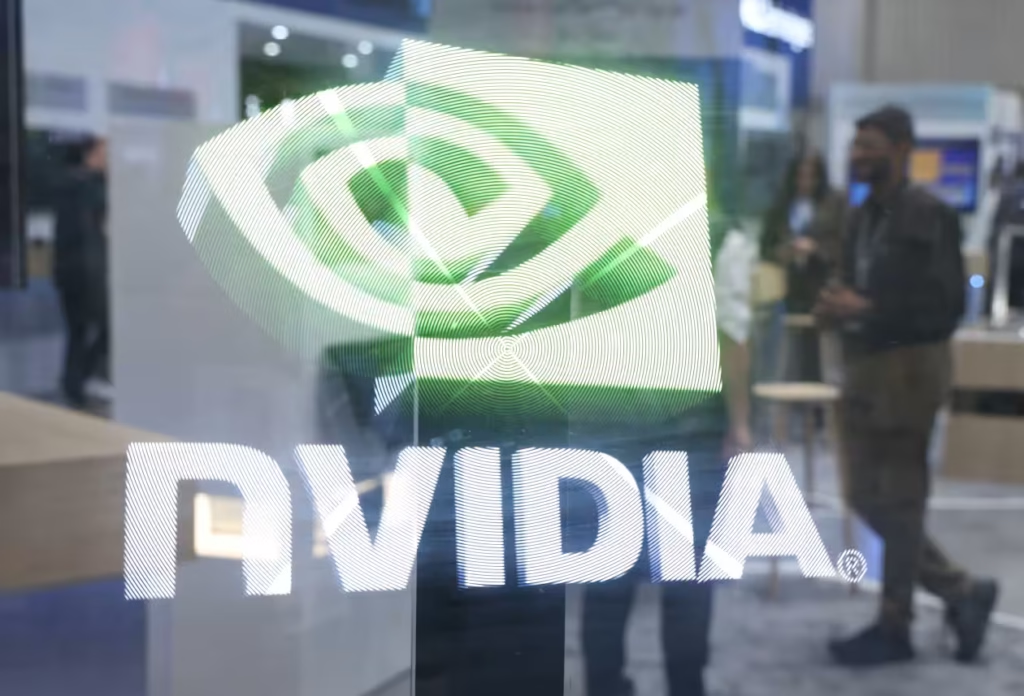May has seen a sharp increase in megacap technology companies as investors look to move past the recent tariff turmoil and Nvidia Corp.’s impending earnings.
The IT companies have recently had the last say on whether or not the stock market had a solid quarter, even though U.S. banks may start earnings season and help set the tone.
In light of this, Nvidia’s (NVDA), the artificial intelligence darling, has a particular place on the week’s itinerary for its fiscal first-quarter earnings on Wednesday.
According to FactSet, Nvidia’s stock increased 3.1% on Tuesday, the day before its quarterly results were expected, and is up 24.3% so far this month. This quarter, the AI chip manufacturer will be the last of the “Magnificent Seven” to traverse the earnings gantlet.
Even though 2025 has been tense on Wall Street, this specific set of IT giants has profited in recent weeks. This is due to the fact that investors who are concerned about tariffs and the possible impact they may have on the economy have once again looked to technology names as a safe haven from the storm rather than the larger stock market.
In contrast to the broader S&P 500 index, which has increased by approximately 4.4% and its equal-weight equivalent by approximately 1.3%, this chart displays the enormous gains made by the “Magnificent Seven” equities since the lows in early April.
According to Melissa Brown, head of investment decision research at SimCorp, “I do think they are viewed, because of their business models and pervasiveness,” as a sort of “safer play, no matter what happens with the economy.” “And despite their higher valuations, as a group, those have been the ones to really be able to deliver on earnings expectations.”
A return to megatech
Following a precipitous decline following President Donald Trump’s “liberation day” tariffs, which startled businesses, investors, and U.S. trading partners in early April, Big Tech made a strong return in May.
According to Dow Jones Market Data, between the market’s close on April 2 and the lows of April 8, the market value of the “Magnificent Seven” corporations fell by a total of $2.12 trillion as a result of Trump’s proposed “maximalist” levies. This group includes Nvidia, Amazon.com Inc. (AMZN), Microsoft Corp. (MSFT), Alphabet Inc. (GOOG), the parent company of Google (GOOGL), Meta Platforms Inc. (META), Tesla Inc. (TSLA), and Apple Inc. (AAPL).
Since early April, Trump’s trade war has changed to include “pauses” on some tariffs to encourage faster negotiations with trading partners. He has also promised more deals after the U.S. and the U.K. unveiled a new trade pact.
According to Dow Jones Market Data, the “Magnificent Seven” increased their market capitalization by $3.7 trillion between the low on April 8 and the peak on May 14, after the U.S.-U.K. pact became public. This brought their total valuation to approximately $16.8 trillion.
Since then, bond yields have increased significantly (BX:TMUBMUSD10Y). Because of their impressive earnings and the confidence surrounding intentions to continue spending on AI, trend strategists concluded that BX:TMUBMUSD30Y has failed to dampen demand for this well-liked group of equities.
Home stretch earnings
First-quarter earnings for technology businesses have been even better than those for the S&P 500 index SPX.
According to FactSet statistics, the S&P 500’s blended profits growth rate for the first quarter was 12.9% compared to the same period last year, which is much higher than the 10-year average of 8.9%.
However, it’s not the whole tale. According to a research released on May 23, “The Communication Services sector reported the second-highest (year-over-year) earnings growth rate of all 11 sectors at 29.2%,” senior earnings analyst John Butters of FactSet stated.
However, the two companies that contributed most to the sector’s earnings growth were Alphabet and Meta. According to Butters, its combined earnings growth rate would have dropped from 29.2% to 9.6% in the absence of those two businesses.
Nevertheless, when comparing the “Magnificent Seven” stocks’ profit growth to that of the other 493 businesses in the S&P 500, this chart demonstrates how much they have outperformed the overall market.
Jeff Buchbinder, the chief equities strategist at LPL Financial, estimated that their combined capital expenditure expectation for 2025 was around $330 billion. “These seven companies will probably end up driving nearly half of the S&P 500’s EPS growth overall after Nvidia reports this week,” he wrote in a client note on Monday.
Following Trump’s announcement over the long holiday weekend that his proposal for a 50% tariff against the EU will be postponed until July 9, the broader S&P 500 saw a 2.1% gain on Tuesday. Meanwhile, FactSet reports that the Dow Jones Industrial Average DJIA gained 1.8% and the Nasdaq Composite Index COMP surged 2.5%.





